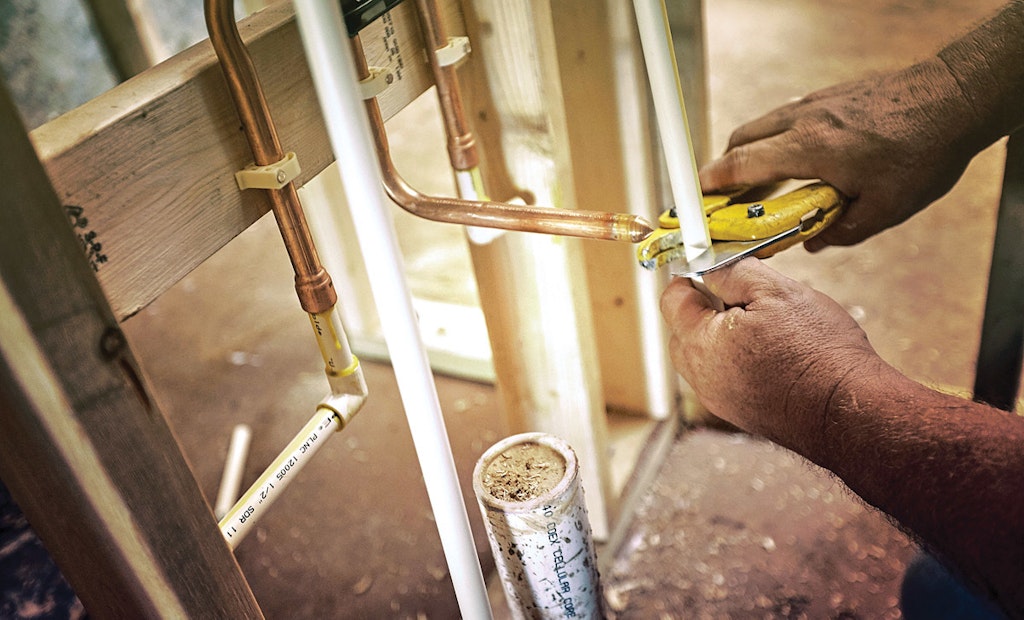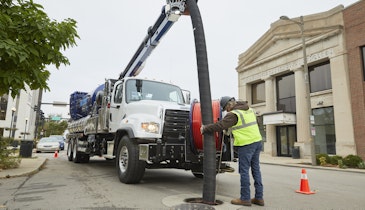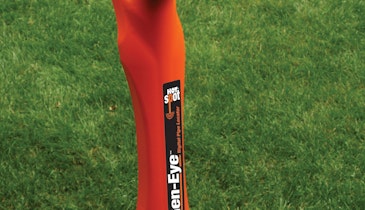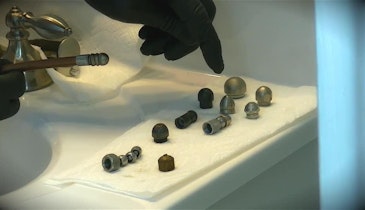
A contractor cuts CPVC to the correct length during a home installation job. CPVC systems can be sized the same as copper and deliver similar flow rates and water pressure at fixtures. (Photo courtesy Lubrizol Advanced Materials)
Interested in Plumbing?
Get Plumbing articles, news and videos right in your inbox! Sign up now.
Plumbing + Get AlertsPlastic piping systems use many different materials, and those differences can impact the installation, performance and longevity of the system. Here are some do’s and don’ts to keep top of mind when selecting and working with plastic piping systems.
DON’T: Take water compatibility for granted
The disinfectants used to treat water can be incompatible with some types of plastic piping. When working with PEX, plumbers should be aware certain conditions can increase the risk of degradation explained in the Plastics Pipe Institute’s Technical Note (TN) 53.
PEX is vulnerable to chlorine degradation, so antioxidants are added during the manufacturing process to counter the effects of chlorine on the pipe. TN-53 discusses three conditions that can accelerate the degradation. Two of these — temperatures above 140 degrees F and pressures above 80 psig — are well known and understood, but the third, ORP above 825 mV, is not.
Oxidation reduction potential is, among other things, a measure of water’s ability to break down contaminants. In residential water systems, water disinfection practices increase the ORP to ensure clean, safe drinking water.
When PEX standards were first published over 20 years ago, an ORP above 825 mV was assumed to be rare; but new studies suggest it is more common, particularly with modern water treatment methods such as chlorine dioxide. Plumbers using PEX should research local water conditions to determine whether there is risk that PEX pipes will be carrying water with an ORP above the threshold. Note that ORP can change over time and from point to point to point in the system — presenting a challenge to ensuring compatibility.
To make your decision easier and provide peace of mind when it comes to water compatibility, consider an alternative to PEX. CPVC is a chlorinated compound that is inherently immune to degradation from chlorine-based water treatment. With CPVC, there are no water compatibility issues; you can install CPVC regardless of local water conditions.
DO: Double check chemical compatibility
Just like copper corrodes with dissimilar metals, both CPVC and PEX have chemical compatibility issues that should be considered during installation to prevent premature failure.
While CPVC is compatible with chlorine, there are other materials that can cause pipe damage. Because CPVC has been used in residential plumbing for more than 60 years, these issues have been well researched. Manufacturers, such as Lubrizol Advanced Materials, operate compatibility programs to help plumbers identify both compatible and incompatible building products. Contractors should reference their specific manufacturer’s compatibility guide(s) prior to selecting ancillary materials.
PEX pipe compatibility issues relate to the antioxidants used to protect the material from chlorine. When some materials touch the PEX pipe, the chlorine-inhibiting antioxidants can leach from the PEX pipe to the other material, leaving the pipe with fewer antioxidants to deal with the chlorine in the water. While there are no specific lists of incompatible building products for PEX, the manufacturers typically advise against using adhesive tape, organic chemicals, strong acids or bases, and other detrimental materials.
Plastic PEX fittings are made from other materials — typically polysulfone (PSU) or polyphenylsulfone (PPSU). Both of these materials are extremely incompatible with acetone, which is commonly found in PVC cements and primers. Special care should be taken to ensure drips of cement or primer do not contact plastic PEX fittings.
DO: Consider velocity and pressure effects on pipe sizing
All PEX fittings are inserted into the pipe, reducing the internal diameter of the pipe at each fitting. This is true even with expansion fittings. This restriction can drain 2-3 psi of water pressure for each 1/2-inch, 90-degree elbow. This pressure loss gets more pronounced at small diameters and with higher water velocities.
Additionally, in PEX hot water recirculating systems, the maximum water velocity as prescribed by multiple manufacturers (and some codes) is 2 feet per second due to concerns over accelerated chlorine degradation. Because of these factors, a PEX system will likely need to be upsized in order to ensure adequate water pressure and volume, while staying within the maximum velocity limit.
CPVC uses solvent welded socket fittings that go around the outside of the pipe. As a result, CPVC systems can be sized the same as copper and deliver similar flow rates and water pressure at fixtures.
DON’T: Exceed temperature and pressure specifications
Most plumbers are familiar with the concept of temperature and pressure ratings — the code requires that all products be rated for at least 100 psi at 180 degrees F and both PEX and CPVC meet that requirement for burst strength. However, at lower temperatures a difference does emerge.
The room temperature burst pressure rating of PEX is 160 psi, while that figure for CPVC is 2.5 times higher at 400 psi. CPVC systems de-rate faster than PEX as temperatures increase but remains at least double the pressure rating of PEX up to 120 degrees F and retains a pressure rating advantage all the way up to the code requirement.
Because CPVC is immune to chlorine degradation, only the burst temperature and pressure ratings apply to CPVC systems. However, for PEX systems the burst temperature and pressure rating are only half of the issue. When used in chlorinated water, the limits of 140 degrees F and 80 psi apply independently — meaning that either temperature or pressure above the limit can each increase the risk of chlorine degradation in PEX pipes.
DO: Follow manufacturer installation recommendations
CPVC and PEX use different installation processes and tools, but there are also differences between manufacturers of the same material. Familiarize yourself with the specific instructions from the manufacturer and never assume processes and tools are the same among manufacturers of the same material. Some manufacturers also provide training resources that can be valuable refreshers, such as webinars and field support.
Having success with any plumbing material requires paying attention to material compatibility, sizing and recommended installation practices. Plastic materials are no exception. When these considerations are properly taken into account, plastic plumbing systems can deliver excellent performance and reliability.






